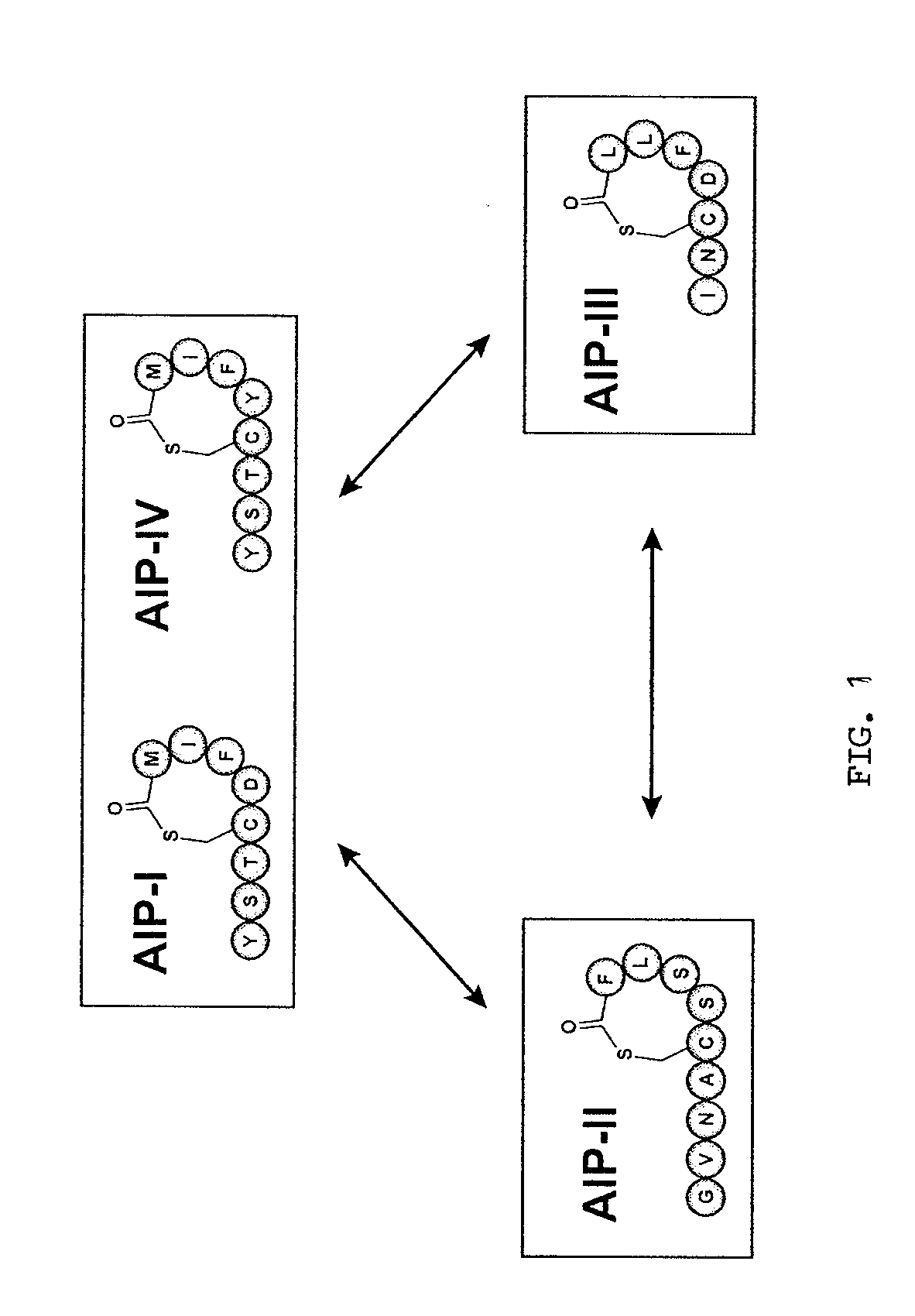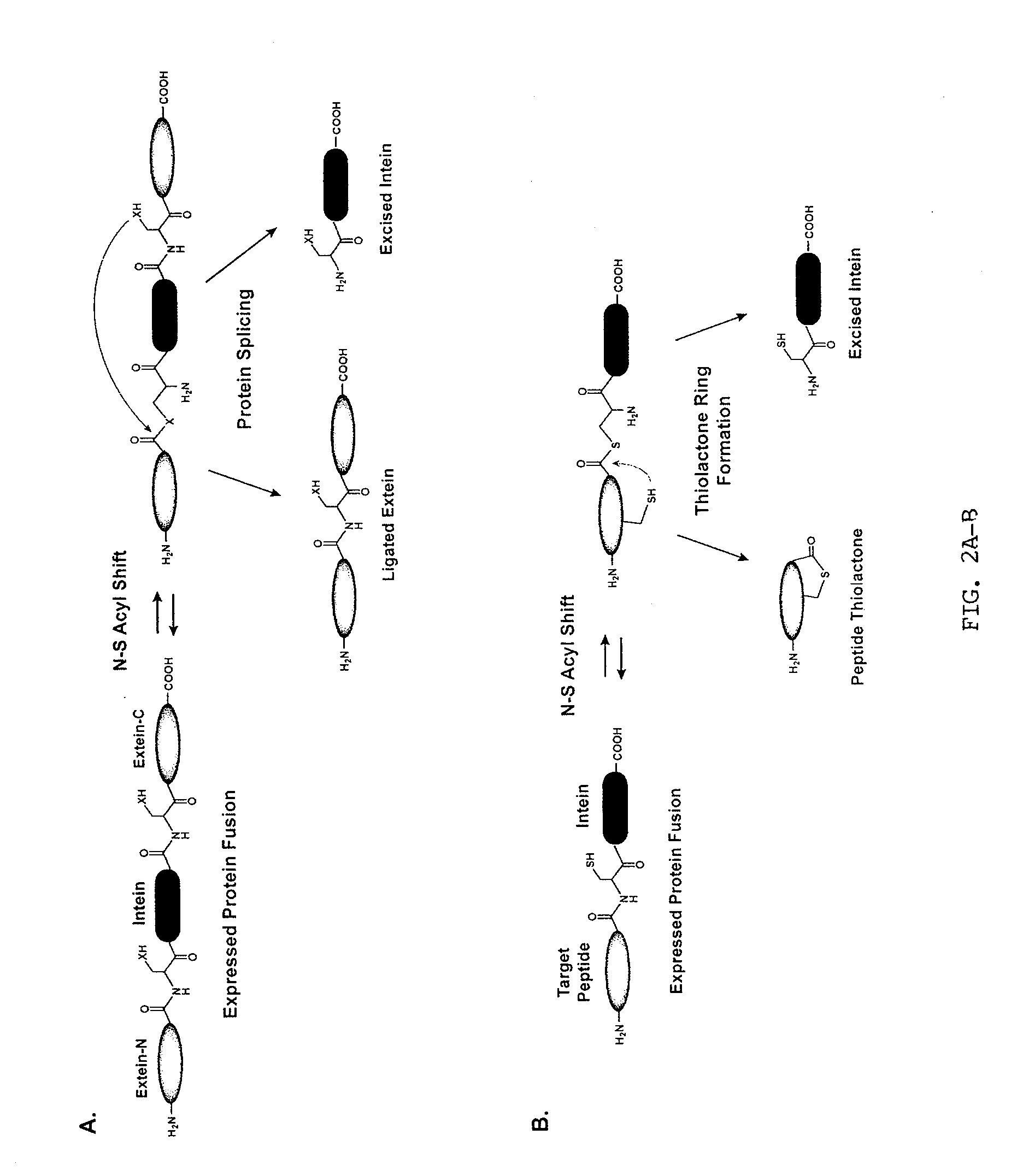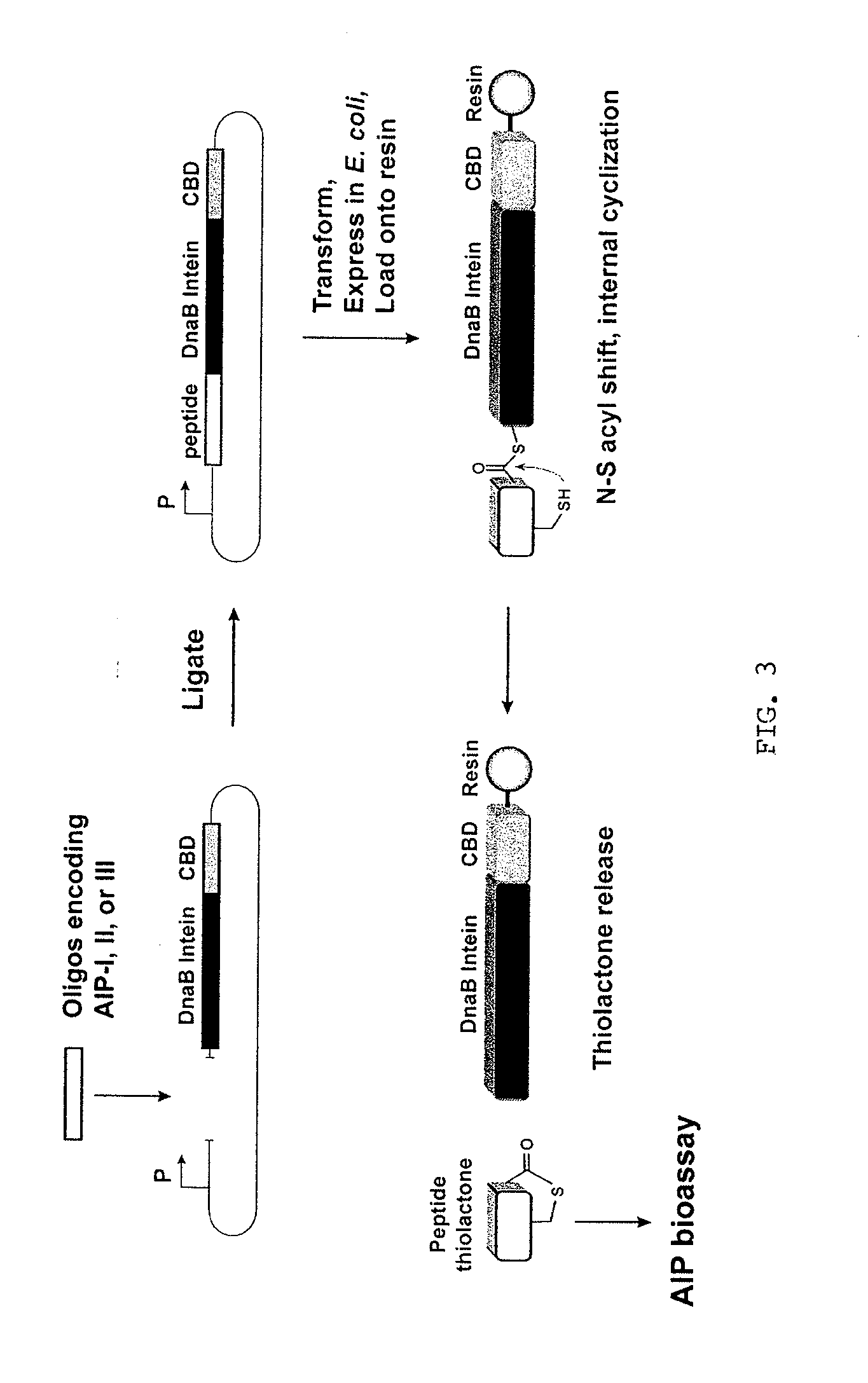Method of Making Cyclic Polypeptides with Inteins
a cyclic polypeptide and intein technology, applied in the field of cyclic polypeptide synthesis and screening, can solve the problems of inability to generate inability to meet the needs of peptide sources, bacteria peptides, etc., and achieve the effect of generating a diverse cyclic peptide library, and reducing the number of steps of the synthesis process
- Summary
- Abstract
- Description
- Claims
- Application Information
AI Technical Summary
Benefits of technology
Problems solved by technology
Method used
Image
Examples
example 1
Materials and Methods
[0112]Culture media and growth conditions. A list of strains and plasmids used and their genotypes is provided in Table 3. E. coli cultures were maintained in Luria-Bertani (LB) broth and S. aureus strains were maintained in tryptic soy broth (TSB). E. coli antibiotic concentrations were (in μg / ml): ampicillin (Amp), 100; chloramphenicol (Cam), 30. S. aureus antibiotic concentrations were (in μg / ml): chloramphenicol (Cam), 10; tetracycline (Tet), 10. All reagents were purchased from Fisher Scientific (Pittsburg, Pa.) and Sigma (St. Louis, Mo.) unless otherwise indicated.
[0113]Recombinant DNA Techniques. Restriction and modification enzymes were purchased from New England Biolabs (Beverly, Mass.), and were used according to manufacturer's instructions. All DNA manipulations were performed using E. coli DH5α-E (Invitrogen, Carlsbad, Calif.). All oligonucleotides were synthesized at Integrated DNA Technologies (Coralville, Iowa). Plasmids were transformed into E. c...
example 2
Results
[0121]Construction of a DnaB mini-intein plasmid. The molecular design of the mini-intein plasmid was based on the gene deletion studies performed by Liu and colleagues (Sun et al., 2004; Wu et al., 1998), who determined that the 429-amino acid DnaB intein in Synechocystis sp. PCC6803 could be reduced to a 154-amino acid active protein. To construct the mini-intein, the gene fragments encoding the two domains of DnaB were PCR amplified from chromosomal DNA, fused together to create the mini-intein, and ligated into an IPTG-inducible expression vector. Additionally, to inactivate splicing without affecting the N—S acyl shift (Chong et al., 1996), the C-terminal asparagine residue was mutated to an alanine. For cloning and protein purification, restriction sites were added to the 5′-end of the intein and a chitin-binding domain (CBD) was fused to the 3′ end. The resulting plasmid, called pDnaB8, allows cloning and expression of any peptide or protein with a C-terminal intein-CB...
PUM
| Property | Measurement | Unit |
|---|---|---|
| Volume | aaaaa | aaaaa |
| Volume | aaaaa | aaaaa |
| Volume | aaaaa | aaaaa |
Abstract
Description
Claims
Application Information
 Login to View More
Login to View More - R&D
- Intellectual Property
- Life Sciences
- Materials
- Tech Scout
- Unparalleled Data Quality
- Higher Quality Content
- 60% Fewer Hallucinations
Browse by: Latest US Patents, China's latest patents, Technical Efficacy Thesaurus, Application Domain, Technology Topic, Popular Technical Reports.
© 2025 PatSnap. All rights reserved.Legal|Privacy policy|Modern Slavery Act Transparency Statement|Sitemap|About US| Contact US: help@patsnap.com



